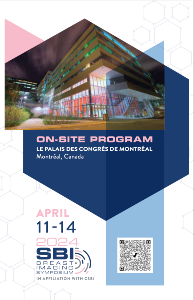Seeing is believing: How accurately does MRI measure residual disease following neoadjuvant treatment in TNBC?
ePosters

Elham Taheri, MD
Resident/Dr
University of Washington
Presenter(s)
Background: Neoadjuvant chemotherapy (NAC) can help reduce patient morbidity by decreasing tumor size prior to surgery in locally advanced breast cancer. Triple-negative breast cancer (TNBC) is an aggressive form of breast cancer that is often treated with NAC in combination with immune checkpoint inhibitors. Predicting the degree of pathological response to NAC can guide oncologists and surgeons in personalizing treatment plans as well as predicting overall and recurrence-free survival. Serial imaging can provide valuable noninvasive assessment of breast cancer response to NAC, and MRI is recognized as one of the most sensitive imaging modalities for monitoring therapy. The accuracy of MRI and other imaging techniques for assessing residual disease following NAC varies based on multiple factors in TNBC such as their baseline diagnostic imaging and pathological features.
Learning Objectives: 1-Recognize common features of TNBC on breast MRI and their pattern of response after NAC
2- Understand advanced quantitative imaging measures and the accuracy of MRI in interim and post-NAC assessment for TNBC subtype tumors.
3- Identify common pitfalls in interim and post-NAC MRI causing false positives and negatives compared to post-surgical pathology results.
4-Be aware of the potential of alternative modalities such as contrast-enhanced mammography (CEM) and FDG-PET in the prediction of the response to NAC in TNBC.
Abstract Content/Results: 1- This will be a pictorial review with several illustrative cases of TNBC pre-, during, and post NAC (or NAC+immune checkpoint inhibitors) with breast MRI. This includes patterns of treatment response of both masses and non-mass enhancement and apparent diffusion coefficient (ADC) ADC value changes in diffusion-weighted images (DWI).
2-We will review common MRI markers of treatment response: morphological and kinetic features on dynamic contrast-enhanced MRI, and changes in apparent diffusion coefficient on diffusion-weighted MRI.
3- The accuracy of breast MRI in predicting response to therapy will be compared to surgical pathology.
4-There will be one or two additional examples using alternate modalities FDG-PET/CT and/or (CEM) in the follow-up of NAC in patients with TNBC.
Conclusion: MRI (contrast-enhanced and diffusion-weighted) can accurately measure the response or resolution of locally advanced TNBC to NAC and could guide NAC medical oncology treatment strategies and potentially downgrade surgical treatment.
Learning Objectives: 1-Recognize common features of TNBC on breast MRI and their pattern of response after NAC
2- Understand advanced quantitative imaging measures and the accuracy of MRI in interim and post-NAC assessment for TNBC subtype tumors.
3- Identify common pitfalls in interim and post-NAC MRI causing false positives and negatives compared to post-surgical pathology results.
4-Be aware of the potential of alternative modalities such as contrast-enhanced mammography (CEM) and FDG-PET in the prediction of the response to NAC in TNBC.
Abstract Content/Results: 1- This will be a pictorial review with several illustrative cases of TNBC pre-, during, and post NAC (or NAC+immune checkpoint inhibitors) with breast MRI. This includes patterns of treatment response of both masses and non-mass enhancement and apparent diffusion coefficient (ADC) ADC value changes in diffusion-weighted images (DWI).
2-We will review common MRI markers of treatment response: morphological and kinetic features on dynamic contrast-enhanced MRI, and changes in apparent diffusion coefficient on diffusion-weighted MRI.
3- The accuracy of breast MRI in predicting response to therapy will be compared to surgical pathology.
4-There will be one or two additional examples using alternate modalities FDG-PET/CT and/or (CEM) in the follow-up of NAC in patients with TNBC.
Conclusion: MRI (contrast-enhanced and diffusion-weighted) can accurately measure the response or resolution of locally advanced TNBC to NAC and could guide NAC medical oncology treatment strategies and potentially downgrade surgical treatment.

